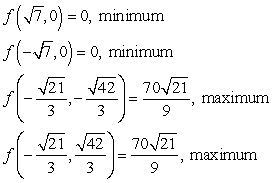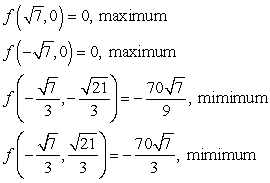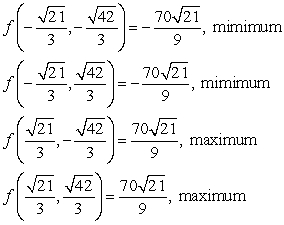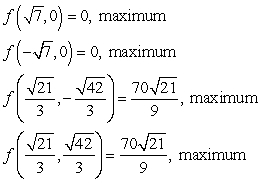Multiple Choice
Use Lagrange multipliers to find the maximum and minimum of the function  subject to the constraint
subject to the constraint  .
. 

A) 
B) 
C) 
D) 
Correct Answer:

Verified
Correct Answer:
Verified
Q102: Use implicit differentiation to find <img src="https://d2lvgg3v3hfg70.cloudfront.net/TB2342/.jpg"
Q103: State the chain rule for finding <img
Q104: Find all first-order partial derivatives. <img src="https://d2lvgg3v3hfg70.cloudfront.net/TB2342/.jpg"
Q105: Find all first-order partial derivatives. <img src="https://d2lvgg3v3hfg70.cloudfront.net/TB2342/.jpg"
Q106: Use implicit differentiation to find <img src="https://d2lvgg3v3hfg70.cloudfront.net/TB2342/.jpg"
Q108: Match the surface to its contour plot.
Q109: Match the surface to its density plot.
Q110: Find the absolute extrema of the function
Q111: Show that the limit does not exist.
Q112: Find the total differential of <img src="https://d2lvgg3v3hfg70.cloudfront.net/TB2342/.jpg"